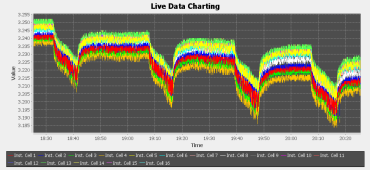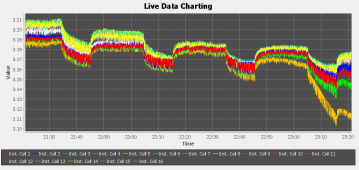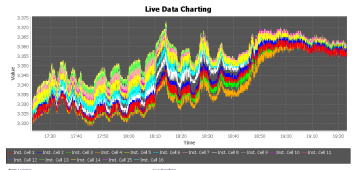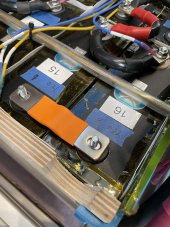New bus bars installed.
At 17 amps with old bus bars, I saw a 0.3mv drop across the long bus bars. With the new ones, it was 0.5mv. Expected - these aren't nearly as much copper. But I'd have to think they're copper based on how they're performing. I have no concerns there.
I charged and let the battery balance to 10mv and then drew it down to 93%. I then charged from shore power at max (120 amps at 56 volts, over 6000 watts), and everything remained cold. The Orion BMS cell voltage graph looked excellent and I had no runners as the battery reached full. Orion cell resistances all looked great, too. This was a great initial test - and a good test to make sure my parallel connections were good (otherwise I would have runners). So I'm happy with the bus bars. We'll see how things fare over the next few days and months...
At 17 amps with old bus bars, I saw a 0.3mv drop across the long bus bars. With the new ones, it was 0.5mv. Expected - these aren't nearly as much copper. But I'd have to think they're copper based on how they're performing. I have no concerns there.
I charged and let the battery balance to 10mv and then drew it down to 93%. I then charged from shore power at max (120 amps at 56 volts, over 6000 watts), and everything remained cold. The Orion BMS cell voltage graph looked excellent and I had no runners as the battery reached full. Orion cell resistances all looked great, too. This was a great initial test - and a good test to make sure my parallel connections were good (otherwise I would have runners). So I'm happy with the bus bars. We'll see how things fare over the next few days and months...









